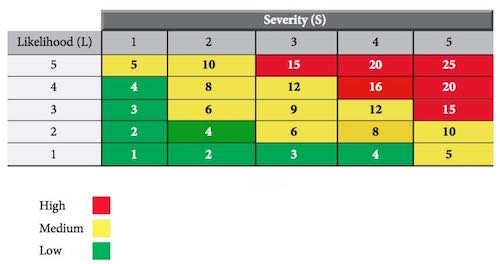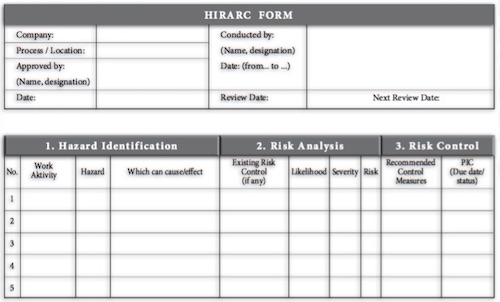Hearing Protection Devices - Methods to prevent hearing loss as a result of the work is to reduce noise at the source. However, in certain working conditions, very little or nothing can be done to reduce noise at the source.
Areas of work like this, employees must wear hearing protection to reduce noise levels reaching the ear. We have to wear hearing protection if the noise or sound levels in the workplace exceeds 85 decibels (dB). Hearing protection works to reduce the noise level and the risk of hearing impairment.
Areas of work like this, employees must wear hearing protection to reduce noise levels reaching the ear. We have to wear hearing protection if the noise or sound levels in the workplace exceeds 85 decibels (dB). Hearing protection works to reduce the noise level and the risk of hearing impairment.
If hearing protection is required, then a complete hearing conservation program should be developed. A hearing conservation program includes an assessment of the noise, the selection of hearing protection devices, training, audiometric testing, maintenance, inspection, record keeping, and program evaluation.
The effectiveness of hearing protection will be greatly reduced if the protective device does not fit or proper hearing during use or if simply applies a portion of the time during the noise. To maintain the effectiveness of protective equipment, then hearing protection equipments cannot be modified.
Selection of hearing protection devices are based on:
- Suitable with the type of job.
- Provide adequate protection. Check the manufacturer's literature.
- Comfortable when it is worn.
There are three types of hearing protection Devices, namely:
- Ear Plugs - inserted to block the ear canal. Ear plugs shaped pre-moulded (preformed) or mouldable (foam). Ear plugs are generally sold as disposable or reusable products.
- Semi-insert ear plugs consist of two ear plugs fitted tip head band.
- Ear Muff - Ear Caps made of a soft material that can reduce the noise by covering all parts of the ear and hold / held by the head band.
The choice of hearing protection devices depends on factors including the level of noise, comfort, and suitability of hearing protection for workers and the environment. Most importantly, hearing protection devices should provide the desired noise reduction. If the noise is intermittent, then the ear muff be more suitable, because it may be less convenient to insert and remove the ear plugs.
Manufacturers provide information on noise reduction capability of hearing protection devices or identified by NRR (Noise Reduction Rating). NRR value based on noise reduction obtained in laboratory conditions.
NIOSH recommends using data appropriate to the subject based on the ANSI S12.6-1997 to estimate the damping noise hearing protection. If the data fit the subject is not available, NIOSH recommends de-rating hearing protectors with the appropriate factor with available data.
Specifically, NIOSH recommends that the label NRRs be de-rated as follows:
- Ear Muff - Decrease 25% of NRR label producers
- Formable ear plug - Reduce 50% of the NRR label producers
- All other types of ear plugs - Reduce 70% of NRR label producers
- Actual Noise Reduction Rating (NRR) can also be calculated with the following formula:
- Actual NRR = (NRR - 7) / 2
Example:
- NRR = 29dB (from label manufacturing)
- Actual NRR = (NRR - 7) / 2
- Actual NRR = (29-7) / 2 = 11 dB
- Thus, the actual NRR from the protective device is 11 dB.
Ear plugs can be produced in bulk or individually moulded to fit the ear and ear plugs can re-use or disposable. On the positive side, ear plug is easy to use, cheaper than the ear muff, and more comfortable in hot or humid work areas.
On the other hand, ear plugs provide less protection than the ear muff, and cannot be used in regions that have a noise level of more than 105 dB. Ear plugs are not visible when used as ear muff case until the employer is not easy to see what employees wear. And ear plugs must be properly inserted to provide adequate protection.
On the other hand, ear plugs provide less protection than the ear muff, and cannot be used in regions that have a noise level of more than 105 dB. Ear plugs are not visible when used as ear muff case until the employer is not easy to see what employees wear. And ear plugs must be properly inserted to provide adequate protection.
Ear muff can vary based on the material, depth of cover, and the strength of headband. The deeper and heavier cover will increasingly better protection. Headband should be quite strong and powerful to keep a stable position, but not too tight for comfort.
On the positive side, ear muff usually able to provide greater protection than the ear plugs. Ear muff easier to adjust, generally more durable than ear plugs and ear muff has a part that can be replaced.
On the other hand, ear muff more expensive, and often less comfortable than ear plugs, especially in the hot work area. In the noise level is very high areas, ear muff and ear plugs can be used together to provide better protection.
On the positive side, ear muff usually able to provide greater protection than the ear plugs. Ear muff easier to adjust, generally more durable than ear plugs and ear muff has a part that can be replaced.
On the other hand, ear muff more expensive, and often less comfortable than ear plugs, especially in the hot work area. In the noise level is very high areas, ear muff and ear plugs can be used together to provide better protection.

















